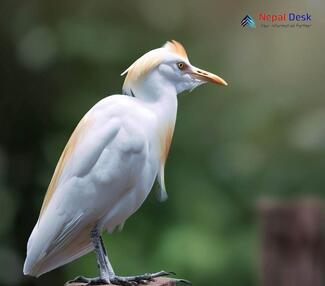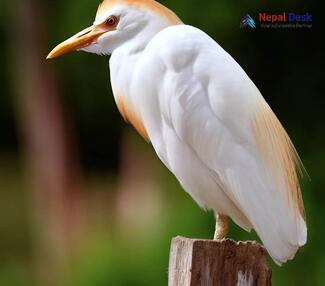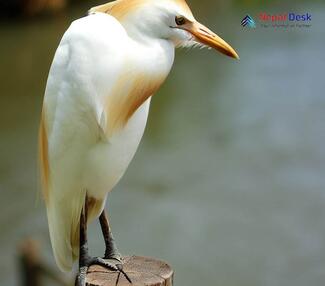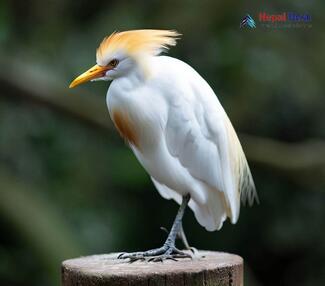Nepal, known for its breathtaking natural beauty and diverse wildlife, is a haven for bird enthusiasts. Among the hundreds of bird species found here, one particular species that stands out is the cattle egret (Bubulcus ibis). This fascinating bird, which originally hails from Africa and Asia, has captivated bird lovers with its peculiar habits and striking appearance. Here, in this article, we will be looking at the various aspects of this versatile bird.
Adaptability and Distribution
The cattle egret has proven to be an incredibly adaptable species. In recent decades, these birds have expanded their range across various continents, including North and South America as well as Australia. In Nepal, they are commonly found in the Terai region and other parts of the country near wetlands and grassy habitats. Their adaptability has allowed them to thrive in both rural and urban settings.
Distinctive Appearance
One of the most distinctive features of cattle egrets is their bright white plumage, which sets them apart from other herons or egrets found in Nepal. During the breeding season, they exhibit patches of golden or rusty-orange hues on their head, chest, and back. Additionally, these birds have a compact size with a height varying between 46-56 cm and a wingspan ranging from 88-96 cm.
Diet and Feeding Habits
Although the cattle egret shares some similarities with other heron species in terms of appearance and habitat preferences, it differs significantly in feeding habits. These birds are often found following grazing animals such as cows or buffaloes. As these large mammals disturb insects hiding in the grass, cattle egrets seize the opportunity to feed on them. Sometimes they also ride on the backs of these animals to pick off ticks and parasites.
Breeding and Nesting Behavior
Cattle egrets are known for their colonial nesting behavior. They establish breeding colonies close to water bodies amongst tall trees or reed beds. These egret pairs form monogamous relationships during the breeding season and jointly take part in nest construction, incubation, and chick rearing. Their nests are commonly made from sticks and lined with grass or other soft materials. A typical clutch contains 2-5 pale blue eggs that hatch in approximately 22-26 days.
Conservation Efforts in Nepal
Nepal has recognized the importance of conserving its rich birdlife and has established various protected areas to safeguard these species' habitats. The country now boasts protected wildlife reserves, national parks, and conservation areas that are home to a diverse array of avian species, including the cattle egret. To further support bird conservation, multiple NGOs and government organizations are promoting eco-tourism and conducting research to better understand the nation's unique birdlife.
In conclusion, the cattle egret is a remarkable bird species that has managed to make its presence felt across continents. By adapting to different ecosystems and displaying fascinating feeding habits, it adds an extra dash of intrigue to Nepal's already mesmerizing wildlife. Whether you're a seasoned birdwatcher or simply enjoy observing nature's wonders, witnessing these captivating birds in their natural habitat is an experience not to be missed.




